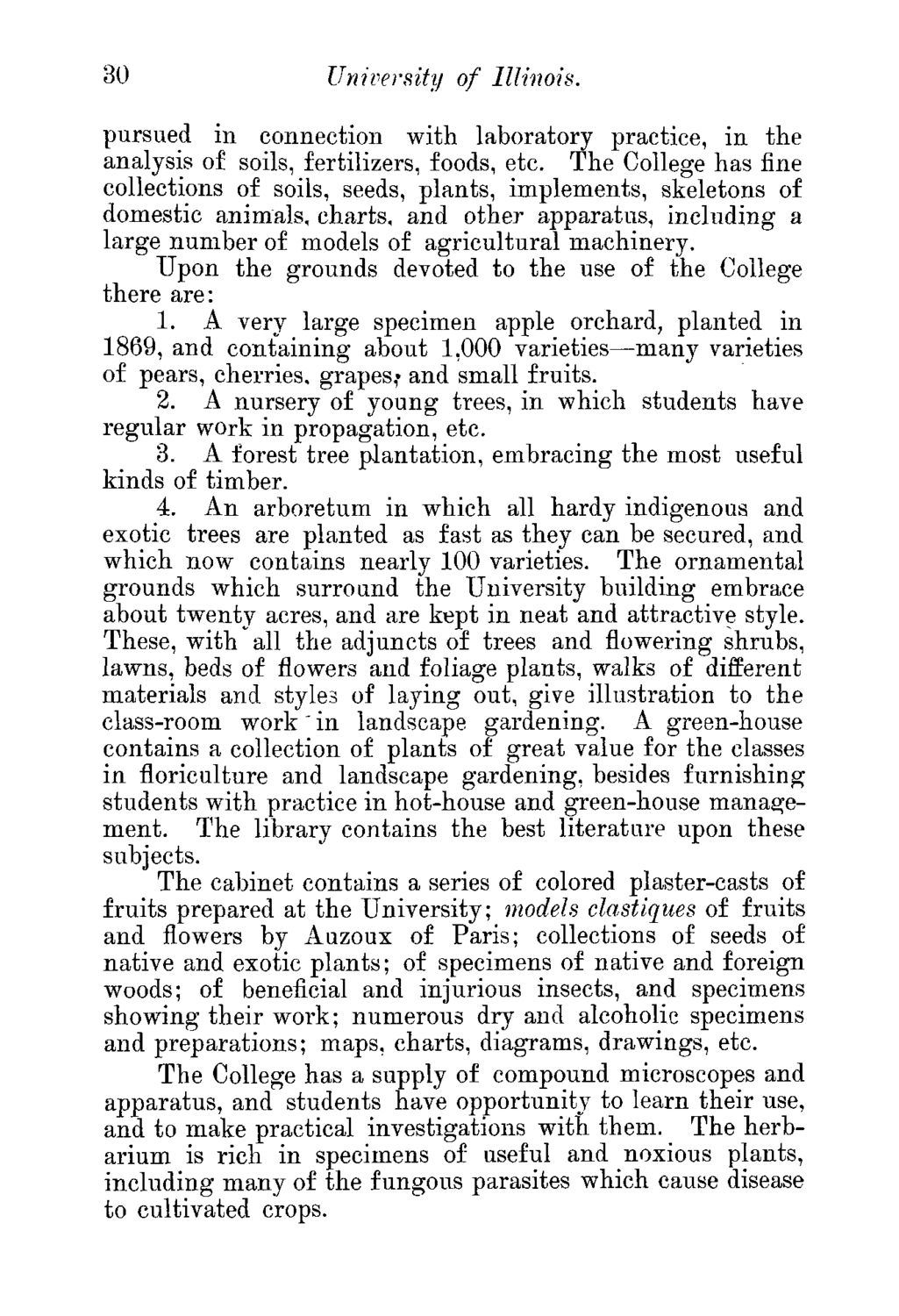| |
| |
Caption: Course Catalog - 1885
This is a reduced-resolution page image for fast online browsing.

EXTRACTED TEXT FROM PAGE:
30 University of Illinois. pursued in connection with laboratory practice, in the analysis of soils, fertilizers, foods, etc. The College has fine collections of soils, seeds, plants, implements, skeletons of domestic animals, charts, and other apparatus, including a large number of models of agricultural machinery. Upon the grounds devoted to the use of the College there are: 1. A very large specimen apple orchard, planted in 1869, and containing about 1,000 varieties—many varieties of pears, cherries, grapes,- and small fruits. 2. A nursery of young trees, in which students have regular work in propagation, etc. 3. A forest tree plantation, embracing the most useful kinds of timber. 4. An arboretum in which all hardy indigenous and exotic trees are planted as fast as they can be secured, and which now contains nearly 100 varieties. The ornamental grounds which surround the University building embrace about twenty acres, and are kept in neat and attractive style. These, with all the adjuncts of trees and flowering shrubs, lawns, beds of flowers and foliage plants, walks of different materials and styles of laying out, give illustration to the class-room work" in landscape gardening. A green-house contains a collection of plants of great value for the classes in floriculture and landscape gardening, besides furnishing students with practice in hot-house and green-house management. The library contains the best literature upon these subjects. The cabinet contains a series of colored plaster-casts of fruits prepared at the University; models clastiques of fruits and flowers by Auzoux of Paris; collections of seeds of native and exotic plants; of specimens of native and foreign woods; of beneficial and injurious insects, and specimens showing their work; numerous dry and alcoholic specimens and preparations; maps, charts, diagrams, drawings, etc. The College has a supply of compound microscopes and apparatus, and students have opportunity to learn their use, and to make practical investigations with them. The herbarium is rich in specimens of useful and noxious plants, including many of the fungous parasites which cause disease to cultivated crops.
| |